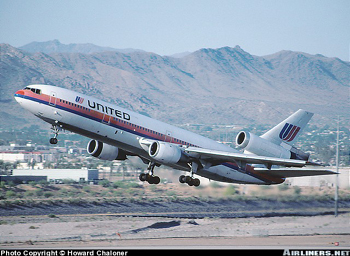Use the NTSB Accident Investigation Report to examine the occurrences
Summary of Events Leading Up to the Emergency Landing of United Airlines Flight 232
On July 19, 1989, United Airlines Flight 232, a McDonnell Douglas DC-10-10, experienced a catastrophic failure that led to an emergency landing at Sioux Gateway Airport in Sioux City, Iowa. Below is a reverse timeline of the key occurrences leading up to this emergency landing, based on the findings from the NTSB Accident Investigation Report and external resources.
Reverse Timeline of Events:
-
Emergency Landing (July 19, 1989): Flight 232 attempted an emergency landing at Sioux Gateway Airport after losing control due to hydraulic failure.
-
Engine Failure (July 19, 1989, approximately 14:09 CDT): While cruising at about 37,000 feet, the No. 2 tail-mounted engine experienced a catastrophic failure. The engine's fan disk fractured, leading to the release of significant debris that damaged critical hydraulic systems.
-
Initial Climb (July 19, 1989): Flight 232 had taken off from Denver International Airport with 285 passengers and 11 crew members on board and was in a normal climb phase until the instant of engine failure.
Events Excluded from the Investigation Timeline:
-
Pre-flight Checks: Routine pre-flight checks conducted by the crew are standard operating procedures and did not contribute to the emergency directly.
-
Passenger Boarding and Preparation: The boarding process and preparation for flight did not play a role in the eventual hydraulic failure and emergency landing.
-
Air Traffic Control Communications: Routine communications with Air Traffic Control that occurred before the emergency did not influence the failure of the engine or the subsequent emergency landing decision.
Explanation for Exclusion and Retention:
The events listed were excluded because they were standard procedures in aviation and did not directly impact the emergency situation that unfolded. The retained events specifically point to the engine failure as the critical initiating factor, which then led to the loss of hydraulic control and mandated an emergency landing. The accident was largely caused by the mechanical failure of the aircraft, resulting in a unique and challenging situation for the flight crew.
For an in-depth understanding, you can refer to the full NTSB report available here and additional details can be found on the NTSB's website DCA89MA063.aspx and the Wikipedia page on United Airlines Flight 232.
Work fast from anywhere
Stay up to date and move work forward with BrutusAI on macOS/iOS/web & android. Download the app today.


